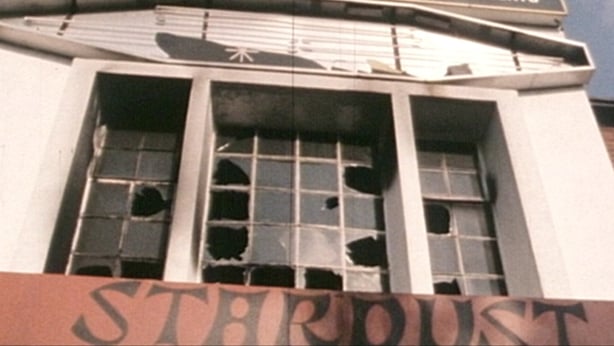The former manager of the Stardust has said he still believes that exit doors were unlocked on the night of the deadly blaze in which four dozen people lost their lives.
Eamon Butterly was giving evidence again today at the inquests into their deaths which also heard that that the carpet tiles fitted on the walls significantly contributed to the rapid spread of the fire.
The inquests into the deaths of 48 people, who lost their lives in the 1981 fire, is taking place at the Dublin District Coroners Court.
The inquests, in front of coroner Dr Myra Cullinane and a 13-person jury, are being held in the Pillar Room on the ground of the Rotunda Hospital.
Counsel for the inquests, Gemma McLoughlin Burke has continued her questioning of Mr Butterly and asked him about events that took place when the fire broke out.
Mr Butterly told the court that he was told at around 1.30am that there was fire and said to ring 999.
He said he saw the fire in the corner of the west alcove, "on top of the seats" and said he saw two or three doormen trying to put the fire out with fire extinguishers.
Mr Butterly said he then shouted at them to concentrate on getting the people out.
He was asked if the fire extinguishers were working and he said "nobody told me they weren't".
Mr Butterly also told the inquests that he was not the owner of the Stardust and said his father was the boss.
Later, under questioning from Michael O’Higgins who is representing families of the victims, Mr Butterly said it was on the head doorman Tom Kennan’s initiative that fire exits were locked for a time on disco nights.
In response to questioning, Mr Butterly said he was not throwing Tom Kennan "under the bus".

Mr Butterly agreed that it was his position that all the exits were unlocked and there was no reason people had difficulty in getting out the doors.
He said when he was shouting at people to get out, he did not say what particular exit they should leave from. He said that in hindsight it "probably" would have helped if he had, but said he was "panicking" as well.
Mr O’Higgins said he accepted that Mr Butterly did not have the "remotest clue" what he was doing as the fire continued.
He was asked by Mr O’Higgins if welding steel sheets to toilet windows was an over-reaction, saying that a lot of people had gone to the toilets to try to escape.
Mr Butterly said "in hindsight" the toilets were toilets, they were not fire escapes.
Mr O’Higgins asked did anyone ask "before we turn it into a fortress, what’s going to happen if there’s a fire?" Mr Butterly said there was no foresight.
He also said the doors would open if the chains were draped across them to give the impression they were locked. The inquests have heard this referred to ‘mock-locking’ and that Mr Butterly told gardaí in 1981 that it had originated from the doormen.
He was asked if they ever opened them when they were in that position. He said he did not recall.
Mr O'Higgins also asked if it would not be a matter of common sense that there should have been a policy in place in the event of a fire of "lights up, music off, leave immediately".
Mr Butterly said it was a completely different situation back then and said "we weren’t given any regulations about that".
Mr O’Higgins said he was going to suggest there were lots of laws in place telling him what to do. "I didn’t know about them," Mr Butterly replied.
Mr O'Higgins then described numerous accounts from people who had difficulty getting out of the exits including the main entrance, also known as exit 2.
He said the accounts painted a graphic picture of people who could not get out of the premises while the fire was raging.
He said it was "completely chaotic" and asked if Mr Butterly would agree. The witness said he would, later saying the accounts were shocking.
Mr O'Higgins also told the court that an expert witness will say the use of carpet tiles on the walls in the club significantly contributed to the fire's rapid spread and reduced the time available for occupants to escape.






